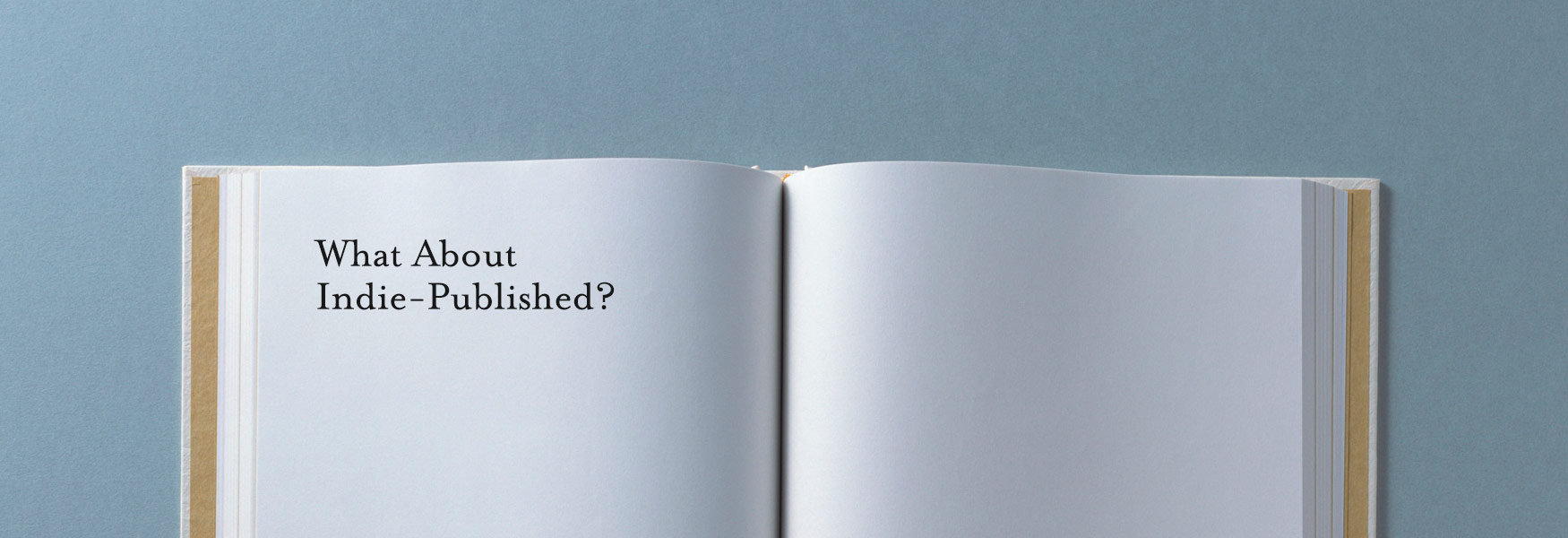
09 Jun What About Indie-Published?
I love stories. When we were children, my brother and I would gaze into the darkness engulfing our little bed at night and tell each other tales of pirates and perilous deeds well done. He was a gifted storyteller, my brother. Now that I’m older, if not a great deal wiser, I read a lot. I suspect all good authors read a lot. Does reading make me a good writer? Probably not. But I suspect it’s pretty much impossible to be proficient at the craft without reading. Stephen King agrees with me—see his excellent book, On Writing. How can you argue with the master of storytelling? Why would you want to? The man knows what he’s talking about.
Lately, I’ve been reading indie-published books; on a fact-finding mission to evaluate how we score against traditionally published works. I’m defining indie-published as any book produced and/or marketed with financial investment from the author—self-published, if that’s what you want to call it. Ten years ago, indie-publishing was considered what an inadequate writer did to bolster the ego and see his/her name in print. If you didn’t get on with an agent and publish through one of the bigger publishing houses, you were not good enough for prime time. Or so it was thought. Not so much now. The market has changed.
Today, many authors publish their own work to retain control of the product and up the financial rewards of sales. Today, advances are smaller, or non-existent, unless you are already a best selling author. And there are fewer publishing houses in business, releasing fewer titles over a longer period of time. Trust me, you wouldn’t want to invest your heart and soul, not to mention a year of your life, in your book to be told by the publisher that it won’t come to market for another two years. Or, worse yet, be told the book was to be published this year and have it bumped off the production list by another title the publisher decided would net more cash for the house.
Suffice it to say, there are many good reasons to follow the faster, more controllable path of indie-publishing. The issue is: how can a reader separate the good from the not so good? There is a lot of product on Amazon and a lot at your local bookstore. Consequently, when I wanted to find out whether the quality of indie-books can match that of traditionally published books, it was a challenge to glean the wheat from the chaff. Of course, the same challenge holds for traditionally published books. All of us have been fooled by a hyped review for a novel that revealed itself to be dreadful.
One habit that helps me spend my reading time wisely is the twenty-page rule. If the book passes the first test of a well designed cover but doesn’t grab me and hold on to me in the first twenty pages, I don’t finish it. When I was younger, I didn’t have the steel to do this. I felt compelled to finish the book—maybe it’ll get better, maybe I’ll find a pearl in here somewhere. I don’t waste my time now. I move on to the next read. I just wish I had followed the twenty-page rule in my youth when it came to men.
In my quest to read indie-books, I’ve kissed a few frogs lately and found several princes by using the twenty-page rule. I’ve also noticed the books I’ve enjoyed most have common attributes. Fresh dynamic characters drive the plots and the stories bring something new to the party. For now, I’ll leave those common threads alone and introduce you to some of the princes I discovered. The books are not discussed in any particular order or rating. It’s random, folks—just because I personally liked them. In my opinion, all covered here are entertaining, well edited and hold their own with traditionally published works. One or two are brilliant. If you have others you want to talk about, send me a message. I’ll be posting my indie-picks for the next month and I’d love to hear about your favorites.
The first book I want to mention was written by a young Atlanta author I met recently at the Dahlonega Literary Festival, Cynthia Lott. When I saw her glossy cover with the menacing, peacock feather mask staring up at me from her display table, I knew I wanted to check out the book. It’s a fabulous cover. The title of this supernatural thriller is The Feathers. Need I say more about how well the cover art sets the tone for the book?
Ms. Lott has done a superb job with this cautionary tale of revenge extracted from the grave and what can happen when the hunted becomes the hunter. Her antagonist, Thomas, is at once scary and oh so alluring—as is all evil—and you almost sympathize with him as Brenda and Roy, two New Orleans cops, track him from murder to murder.
All the characters in The Feathers are skillfully constructed and feel they belong to this story, this book, not borrowed from elsewhere. As the plot unfolds and the reader learns of the, shall we say, extenuating circumstances surrounding Thomas, tension builds and the thread that connects Brenda and Thomas tightens to jerk the reader to an conclusion that is both sad and totally right. Ms. Lott had me from beginning to end with her tale and the story definitely brings something new to the well-traveled world of ghost stories and evil villains. And, the best part is that The Irises, the second book in Ms. Lott’s Southern Spectral Series, has just been released and is on its way to my Kindle at this very moment.
Be sure to catch the next blog post. I’ll be introducing you to a fast paced thriller by Vince Milam, Evil Runs, which takes the reader from Texas to Wales to Syria.


